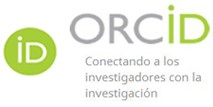Case study of a student with Huntington's disease in the eighth year of Basic General Education
DOI:
https://doi.org/10.62697/rmiie.v4i3.240Keywords:
Juvenile Huntington's disease, educational inclusion, gamification, case study, family supportAbstract
Juvenile Huntington's Disease (JHD) is a rare hereditary neurodegenerative condition that progressively affects motor, cognitive, and behavioral functions. Its onset during school age presents significant challenges for the education system, as it impairs learning, socialization, and the student’s emotional well-being. This case study focuses on an eighth-grade student with a confirmed JHD diagnosis and aims to analyze how the disease impacts her school life, while proposing pedagogical strategies that support inclusive and quality education. Using a qualitative approach and the case study method, the research explores the student’s experience within her family, social, clinical, and educational environments. Through interviews, direct observation, and analysis of medical and psychoeducational reports, the main difficulties were identified, including progressive loss of fine motor skills and oral communication challenges. In response, an educational intervention was designed based on Divertiaprendizaje and gamification, incorporating playful and dynamic activities tailored to her needs. The results indicate that with timely curricular adaptations, flexible teaching strategies, and empathetic support from educators, it is possible to foster active participation, self-esteem, and enjoyment of school in students with JHD. The study also emphasizes the importance of interdisciplinary collaboration among schools, families, and healthcare professionals. This research helps bring visibility to an under-addressed reality and offers an educational approach that can be replicated in similar contexts, contributing to the fulfillment of the right to truly inclusive education.
Downloads
References
Asociación Huntington Española. (2020). Guía para familiares y cuidadores de personas con enfermedad de Huntington. https://huntington.es
Black, P., & Wiliam, D. (2009). Developing the theory of formative assessment. Educational Assessment, Evaluation and Accountability, 21(1), 5–31. https://doi.org/10.1007/s11092-008-9068-5
Ecuador. Ministerio de Educación. (2012). Reglamento general a la Ley Orgánica de Educación Intercultural. https://educacionbilingue.gob.ec/wp-content/uploads/2023/06/REGLAMENTO-GENERAL-A-LA-LEY-ORGANICA-DE-EDUCACION-INTERCULTURAL.pdf
Hargreaves, A., & Fullan, M. (2012). Professional capital: Transforming teaching in every school. Teachers College Press. https://eric.ed.gov/?id=ED530692
Hodelin, A., & Zúñiga, M., (2024). Estrategia neurodidáctica para la atención de escolares con Trastornos por Déficit de Atención (TDA). Maestro y sociedad, 21(3). https://maestroysociedad.uo.edu.cu/index.php/MyS/article/view/6514
Nehl, C., Paulsen, J. S., & Huntington Study Group (2004). Cognitive and psychiatric aspects of Huntington disease contribute to functional capacity. The Journal of nervous and mental disease, 192(1), 72–74. https://doi.org/10.1097/01.nmd.0000106004.67587.57
Paulsen, J. S., Long, J. D., Ross, C. A., Harrington, D. L., Erwin, C. J., Williams, J. K., Westervelt, H. J., Johnson, H. J., Aylward, E. H., Zhang, Y., Bockholt, H. J., Barker, R. A., & PREDICT-HD Investigators and Coordinators of the Huntington Study Group (2014). Prediction of manifest Huntington's disease with clinical and imaging measures: a prospective observational study. The Lancet. Neurology, 13(12), 1193–1201. https://doi.org/10.1016/S1474-4422(14)70238-8
Quarrell, O. W., Nance, M. A., Nopoulos, P., Paulsen, J. S., Smith, J. A., & Squitieri, F. (2013). Managing juvenile Huntington's disease. Neurodegenerative disease management, 3(3), 10.2217/nmt.13.18. https://doi.org/10.2217/nmt.13.18
Snowden, J. S. (2017). The Neuropsychology of Huntington's Disease. Archives of clinical neuropsychology : the official journal of the National Academy of Neuropsychologists, 32(7), 876–887. https://doi.org/10.1093/arclin/acx086
Sparbel, K. J., Driessnack, M., Williams, J. K., Schutte, D. L., Tripp-Reimer, T., McGonigal-Kenney, M., Jarmon, L., & Paulsen, J. S. (2008). Experiences of teens living in the shadow of Huntington Disease. Journal of genetic counseling, 17(4), 327–335. https://doi.org/10.1007/s10897-008-9151-6
Walker, F. O. (2007). Huntington's disease. Lancet (London, England), 369(9557), 218–228. https://doi.org/10.1016/S0140-6736(07)60111-1
Downloads
Published
How to Cite
Issue
Section
License
Copyright (c) 2025 Janett Elizabeth Vera-Vélez, Bertha Alexandra Zevallos-Calvo, Nelly Hodelin-Amable

This work is licensed under a Creative Commons Attribution-NonCommercial-ShareAlike 4.0 International License.
Authors who publish in Revista Mexicana de Investigación e Intervención Educativa (RMIIE), of Universidad Pablo Latapí Sarre agree to the following terms:
1. Copyright
Authors retain unrestricted copyright to their work. Authors grant the journal the right of first publication. To this end, they assign the journal non-exclusive exploitation rights (reproduction, distribution, public communication, and transformation). Authors may enter into additional agreements for the non-exclusive distribution of the version of the work published in the journal, provided that acknowledgment of its initial publication in this journal is given.
© The authors.
2. License
The articles are published in the journal under the Creative Commons Attribution-NonCommercial-ShareAlike 4.0 International License (CC BY-NC-SA 4.0). The terms can be found at: https://creativecommons.org/licenses/by-nc-sa/4.0/deed.en
This license allows:
- Sharing: Copying and redistributing the material in any medium or format.
- Adapting: Remixing, transforming, and building upon the material.
Under the following terms:
- Attribution: You must give appropriate credit, provide a link to the license, and indicate if any changes were made. You may do this in any reasonable manner, but not in any way that suggests the licensor endorses or sponsors your use.
- NonCommercial: You may not use the material for commercial purposes.
- ShareAlike: If you remix, transform, or build upon the material, you must distribute your creation under the same license as the original work.
There are no additional restrictions. You may not apply legal terms or technological measures that legally restrict others from doing anything the license permits.












